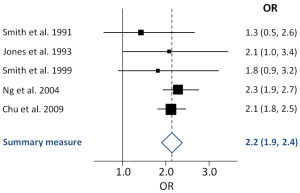Systematic Reviews: not just for the health sciences
 What is a systematic review? Centre for Evidence-Based Medicine (Oxford University) defines it as “the application of strategies that limit bias in the assembly, critical appraisal, and synthesis of all relevant studies on a specific topic. Systematic reviews focus on peer-reviewed publications about a specific health problem and use rigorous, standardized methods for selecting and assessing articles.” But that’s just it… systematic reviews need not only be health related.
What is a systematic review? Centre for Evidence-Based Medicine (Oxford University) defines it as “the application of strategies that limit bias in the assembly, critical appraisal, and synthesis of all relevant studies on a specific topic. Systematic reviews focus on peer-reviewed publications about a specific health problem and use rigorous, standardized methods for selecting and assessing articles.” But that’s just it… systematic reviews need not only be health related.
There are basically 5 steps in the process:
- identify all relevant published and unpublished materials
- select studies for potential inclusion
- assess the quality of each study or report; exclude the poor quality studies
- synthesize the findings from individual studies or reports
- interpret the findings, present an unbiased summary of the findings, report any flaws in the evidence
How does a systematic review differ from a literature review? To start, a systematic review is conducted by a team; it helps to distribute the tremendous amount of work that goes into a systematic review, and it also helps to reduce selection bias. Secondly, a systematic review requires a thorough search in multiple sources looking for as much evidence on a topic that can be retrieved both published and unpublished; it helps to reduce publication bias. Typically a literature search does not include unpublished materials or an all-out resource search. Finally, the goal of a systematic review is to present the best available evidence on the topic/question of interest. A literature review aims to summarize a topic.
So what’s so great about a systematic review? The power of a systematic review lies in the synthesized evidence of a topic. For example, at one time it was common practice to place post-menopausal women on hormone replacement therapy (HRT). As a result of a systematic review on the harm and benefits of HRT, researchers found that although HRT had its benefits, it also increased the incidence of stroke and the risk of venous clots and breast cancer. HRT is no longer administered routinely.
Systematic reviews do not need to be medicine, nursing, or dentistry based. A systemic review can be conducted with non-medical studies as well. The following are resources that can be used to search for systematic review examples:
Cochrane Library and PubMedHealth – for medicine, dentistry, nursing, addictions, psychology
CINAHL – nursing, allied health
Campbell Collaboration – crime and justice, education, international development, and social welfare
The following library resources, although healthcare related, are available for assisting in conducting a systematic review:
Boland, A., Cherry, M. G., & Dickson, R. (2014). Doing a systematic review : A student’s guide. London: SAGE. (Print Book)
Eden, J., & Institute of Medicine (U.S.). Committee on Standards for Systematic Reviews of Comparative Effectiveness Research. (2011). Finding what works in health care : Standards for systematic reviews. Washington, D.C: National Academies Press. (EBook)
Holly, C., Salmond, S. W., & Saimbert, M. (2012). Comprehensive systematic review for advanced nursing practice. New York: Springer Pub. (EBook)
————————————————————————–
Forest plot image by James Grellier (Own work) [CC BY-SA 3.0 (http://creativecommons.org/licenses/by-sa/3.0) or GFDL (http://www.gnu.org/copyleft/fdl.html)], via Wikimedia Commons
